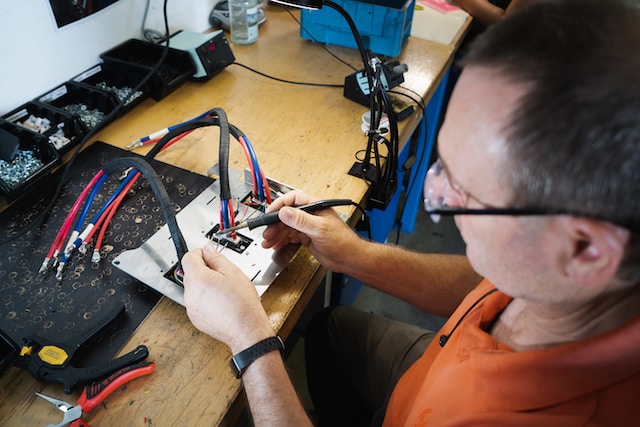Creating great content is one of the best ways to improve your SEO. But that’s only half the battle. Search engines also need to find your content and rank it highly.
Search engine optimization is an essential skill for anyone who owns, manages, monetizes, or promotes online content via search engines. This guide will cover the basics of SEO according to Google’s best practices. For more information, click the link https://www.rankboss.com/ provided to proceed.

Keywords are the terms and phrases people type into search engines to find information about a particular topic or product. They are an important part of SEO and help search engines match relevant content to a user’s search query. Understanding keywords and their importance is the first step to improving your SEO.
While many people mistakenly believe that keywords are dead, the truth is that they are still very important. They are a key element of any SEO strategy and can improve your rankings and traffic. The best way to do this is by conducting research and incorporating them into your content. However, it is important to use keywords sparingly and avoid forcing them into your text where they don’t fit. Instead, add them to your title, headers (H2 and H3), and text in a natural manner.
The term “keyword” has different meanings, and these are not always easily reconciled. Among the uses that we investigate on this site, the term refers to a word in the popular imagination or in everyday discourse that carries interlocking, sometimes contradictory and commonly contested contemporary meanings. It is these meanings that are relevant to the debates we investigate here, as they form the material resources from which new ideas and perspectives might emerge in discussion and debate. Confusing these meanings can lead to confusion and miscommunication in public debate, as well as in personal conversation.
Keywords can be grouped into four types: informational, navigational, commercial, and transactional. Each of these types has its own unique characteristics and implications for your SEO strategy. It is critical to understand the keywords that your audience searches for and to incorporate them into your content. This will allow your content to rank higher in search engine results and attract more visitors to your website.
Choosing the right keywords is crucial to your success. Keywords are the basis for your content, so it’s important to choose them carefully. Use a tool like WordStream to identify the most relevant words for your business and target those keywords in your content. Keywords are also a great way to get more visitors from social media. Make sure to include keywords in your tweets, social media posts, and blog titles.
The on-page optimization process is one of the most important digital marketing strategies. It can help your clients achieve their goals by increasing organic search traffic, improving site visibility, and ultimately driving sales. It is a complex process, so it’s essential that your agency stays on top of the latest trends and best practices.
On-page optimization is the practice of making changes to the content and structure of a website in order to improve its performance. This includes keywords, title tags, and meta descriptions. It also includes optimizing internal links and website navigation to increase user engagement. By following these best practices, you can ensure that your client’s pages are ranking well in SERPs.
Having high-quality content is the foundation of on-page SEO. This can be in the form of blog posts, landing pages, or product descriptions. The goal is to provide users with the information they’re looking for in a way that’s easy to read and understand.
In addition to keyword research, your SEO team should focus on understanding user intent. This means that they need to know what the searcher is looking for when they enter a query into Google. For example, if someone searches for “golden retriever,” they may be looking to adopt one or simply want to learn more about them. This information is crucial for on-page SEO, because it helps search engines understand what the page is about.
Another element of on-page SEO is ensuring that your website has a logical URL structure. This is especially important for large websites that have many pages. A logical URL structure will ensure that each page is related to the others. In addition, it will also help Google index your pages more easily.
Lastly, on-page optimization includes the use of relevant internal and external links. This will help Google determine the credibility and authority of your site. This is important because search engines want to rank pages that are useful and credible.
On-page optimization is an essential part of any SEO strategy. It can be hard to do manually, but with the right tools, you can streamline the process and save time. Using an automated on-page SEO audit tool like AgencyAnalytics can help you stay ahead of the curve and keep your clients’ websites performing well.
When it comes to SEO, link building is one of the most important tools to have in your arsenal. The more quality links you have, the better your website’s health will be. This will help you get more organic traffic and improve your search engine ranking.
It’s important to keep in mind that link-building isn’t a magic bullet, and it will take time before you start to see results. However, if you take the time to do it right, it will pay off in the long run.
To build high-quality links, you’ll need to create valuable content that is linked to by other websites. This can include guest posts, content marketing, and other forms of promotional content. However, you need to be careful when choosing which pages to promote. You don’t want to put your links on pages that are not relevant or could hurt your reputation.
Once you’ve created great content, the next step is to find out which sites will be willing to link to it. You can do this by conducting a Google search for your niche or industry. For example, a search for “technology blogs” will reveal a list of websites that may be interested in linking to your content. Once you have a list of potential sites, reach out to them and ask for a link.
Aside from improving your SEO, link-building can also help you gain trust and credibility in the eyes of your audience. In addition, it can help you get more warm leads and sales. To do this, you’ll need to provide your audience with useful and informative content that meets their needs.
To achieve this, you’ll need to identify the most important keywords and create engaging content around them. You’ll also need to target high-quality, authoritative websites that are willing to link to your page. In addition, it’s important to use tools like Moz and Ahrefs to monitor the health of your website. These tools can help you determine your domain authority, which is a measure of how well your site ranks on Google.
Content creation is the foundation of most SEO campaigns. It involves writing, and while it may vary based on the type of content, there are some best practices that all creators should know. These best practices will help you create high-quality content that engages your audience and grows your business.
First, it is important to know your audience and their goals. You should also understand the search intent behind keywords you use to find your content. This will allow you to tailor your content to meet the needs of people searching for that keyword. It will also ensure that your content is more likely to rank highly in search engines.
Next, you need to set a clear editorial process that clearly defines the tasks for each team member. This will help you stay on schedule, improve accountability, and ensure that all pieces of content are of the highest quality. It will also allow you to better plan and prioritize your work.
A good content creator will take the time to research their topic thoroughly. This will allow them to produce accurate and reliable content, which will establish their credibility and build trust with their audience. Additionally, they will be able to provide new and unique perspectives on their topic, which will make the content more interesting and engaging.
Lastly, good content creation will include a clear call to action that will inspire your audience to take the next step. This could be a purchase, signing up for a newsletter, or even sharing your content on social media. Ultimately, this will increase your traffic and brand awareness, which will lead to more revenue for your company.
While the specifics of content creation will vary based on the type of content, it will always involve a combination of strategy, planning, and execution. Creating effective content that is aligned with your business goals will be the key to success. Whether you are creating blogs, infographics, or videos, it is important to focus on the key aspects of your content, including the keyword, the audience, and the purpose.




